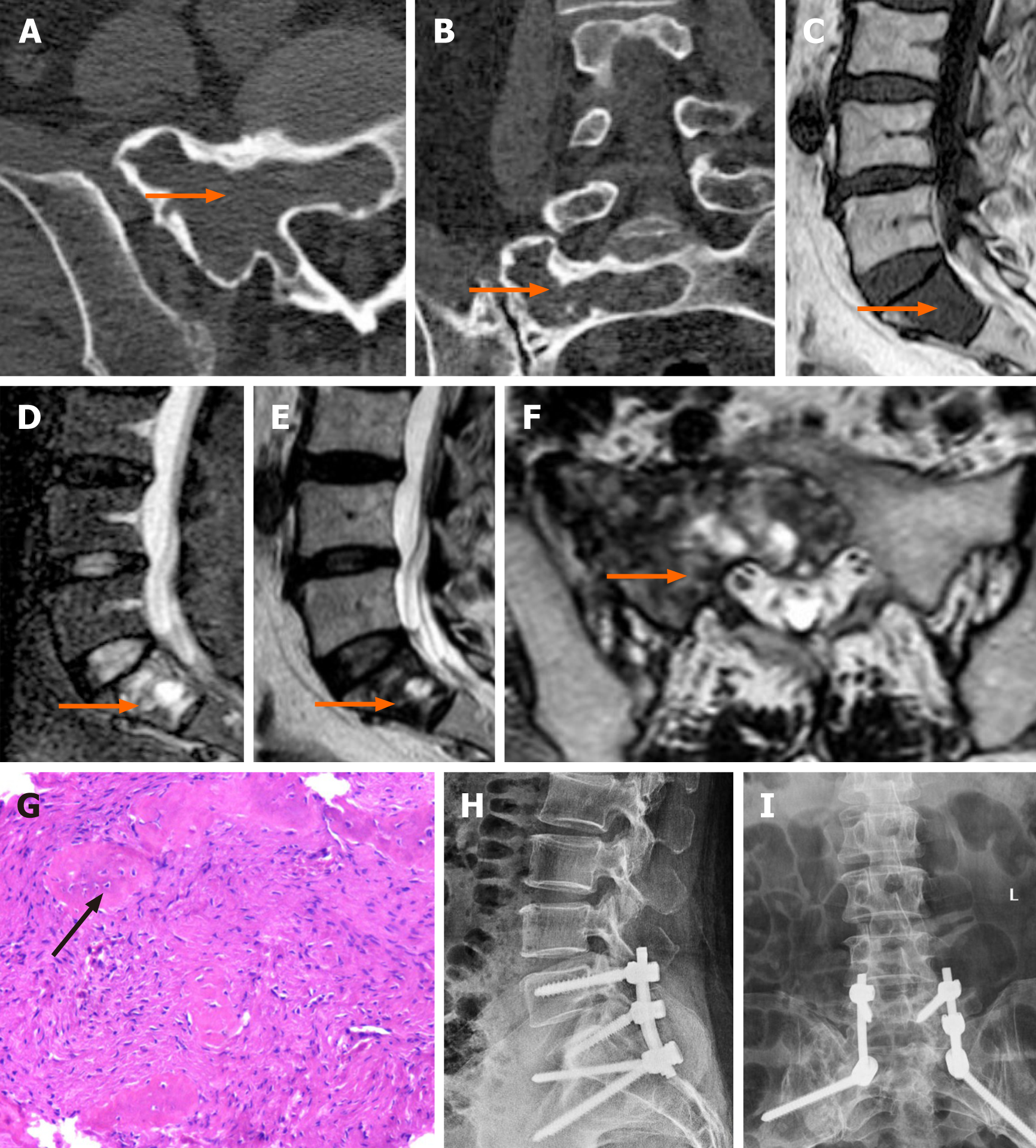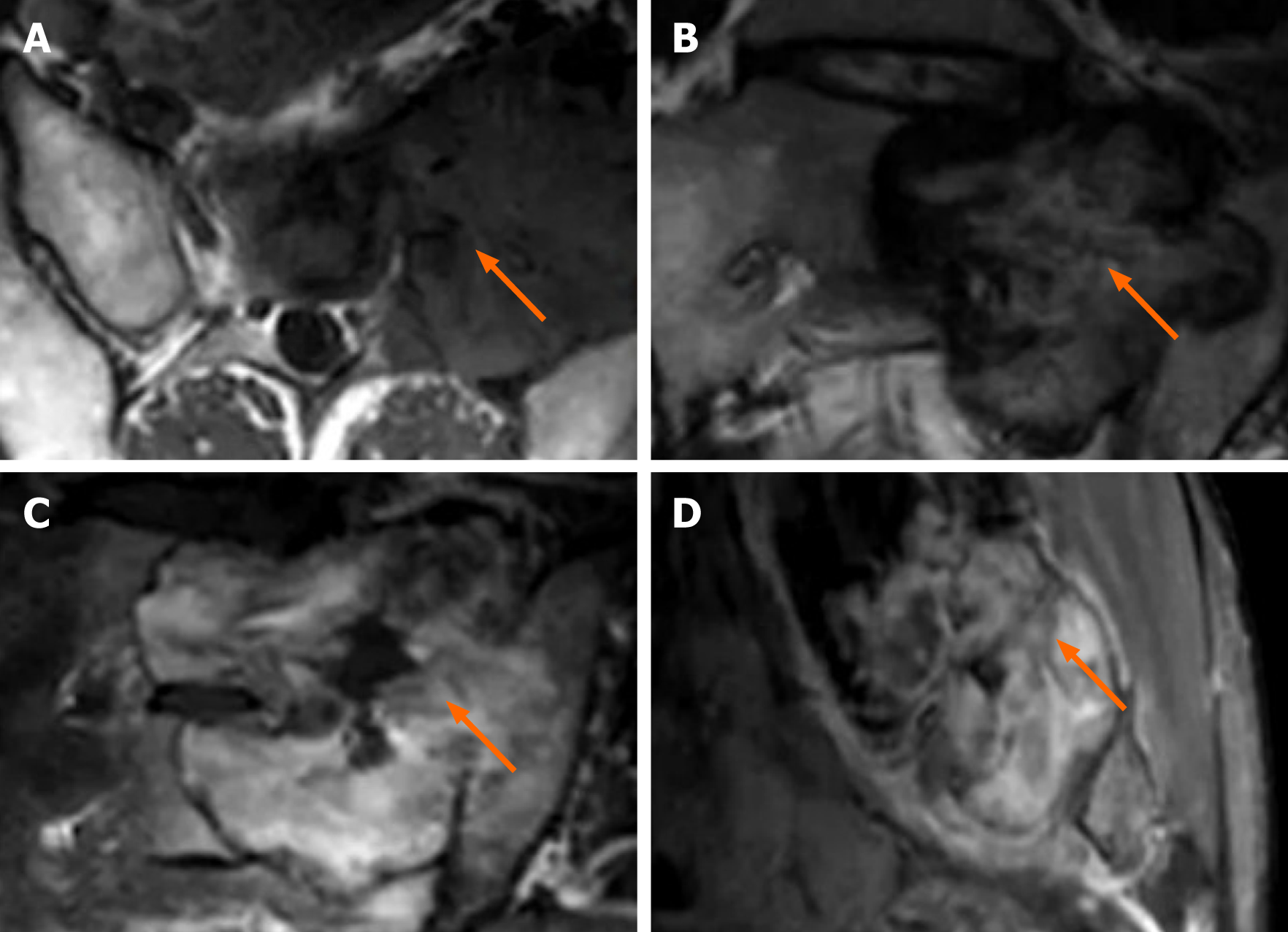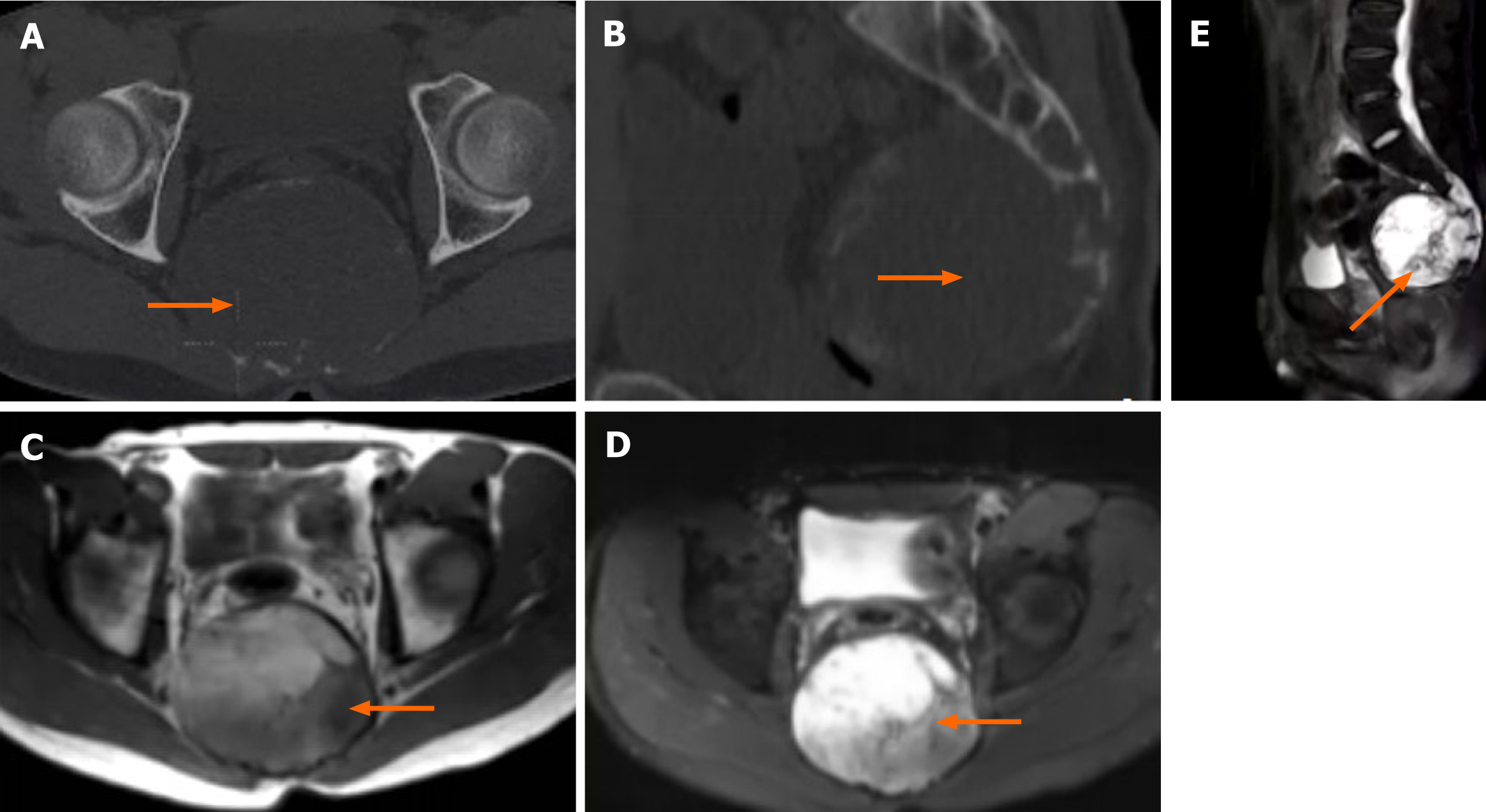Copyright
©The Author(s) 2021.
World J Clin Cases. Feb 16, 2021; 9(5): 1111-1118
Published online Feb 16, 2021. doi: 10.12998/wjcc.v9.i5.1111
Published online Feb 16, 2021. doi: 10.12998/wjcc.v9.i5.1111
Figure 1 A 60-year-old female with monostotic fibrous dysplasia in the sacrum.
A and B: Computed tomography images showing an expansile lesion with a sclerotic rim and ground glass opacity; C: Sagittal T1WI showing low signal intensity; D-F: Sagittal T2WI, FS T2WI and axial T2WI showing iso-high signal intensity; G: Pathological haematoxylin-eosin (HE) staining (×10) showing tumour-like hyperplasia of fibrous tissue with surrounding fibrotic bone formation (arrow); H and I: After the operation, the patient underwent an X-ray examination.
Figure 2 Male, 35 years old.
The sacrum showed expansive bone destruction. The pathological result was a giant cell tumour of the bone. A: Axial T1WI shows iso-low signal intensity with a sclerotic rim; B: Axial T2WI shows iso-high signal intensity; C and D: The lesion showed obvious heterogeneous enhancement.
Figure 3 Female, 18 years old.
The sacrum showed obvious expansive bone destruction. The pathological result was an aneurysmal bone cyst. A and B: Axial computed tomography showing multi-atrial osteolytic destruction. High density separations are visible in this lesion; C: Axial T2WI showing multiple fluid-fluid levels.
Figure 4 Male, 37 years old.
The pathological result was chordoma. A and B: Axial and sagittal computed tomography showing osteolytic bone destruction of the sacrum with a large soft tissue mass. Destruction of the cortical bone is visible; C: Axial T1WI showing high and low signal intensity; D and E: FS T2WI showing iso-high mixed signal intensity.
- Citation: Liu XX, Xin X, Yan YH, Ma XW. Imaging characteristics of a rare case of monostotic fibrous dysplasia of the sacrum: A case report. World J Clin Cases 2021; 9(5): 1111-1118
- URL: https://www.wjgnet.com/2307-8960/full/v9/i5/1111.htm
- DOI: https://dx.doi.org/10.12998/wjcc.v9.i5.1111












